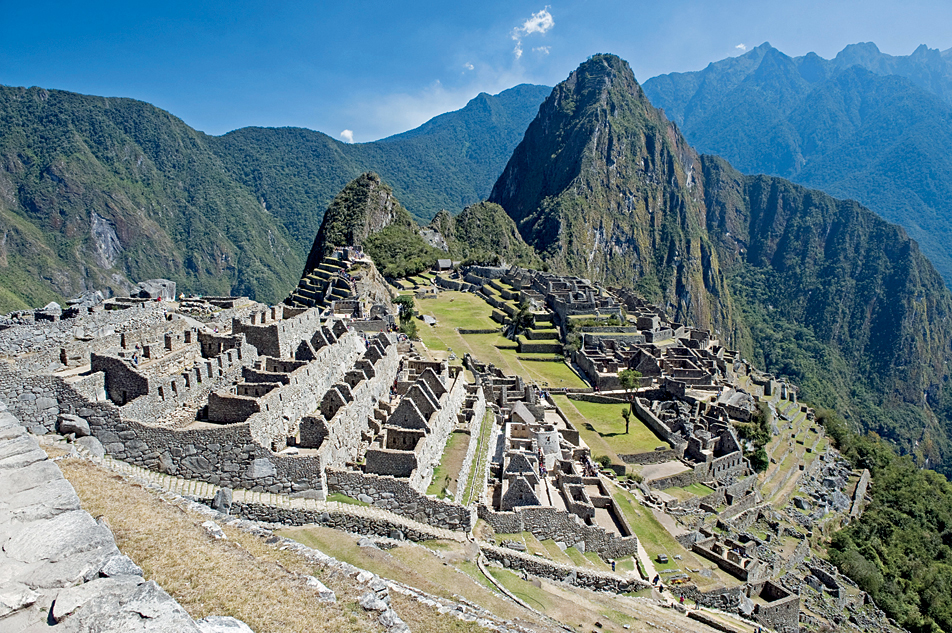A History of World Societies:
Printed Page 307
A History of World Societies Value
Edition: Printed Page 306
Chapter Chronology
Inca Imperial Expansion
The combination of ancestor worship and split inheritance provided the logic and impulse for expanding Inca power. The desire for conquest provided incentives for courageous (or ambitious) nobles: those who succeeded in battle and gained new territories for the state could expect to receive lands, additional wives, servants, herds of llamas, gold, silver, fine clothes, and other symbols of high status. Even common soldiers who distinguished themselves in battle could be rewarded with booty and raised to noble status. Under Pachacuti Inca and his successors, Inca domination was extended by warfare to the frontier of present-day Ecuador and Colombia in the north and to the Maule River in present-day Chile in the south, an area of about 350,000 square miles. Eighty provinces, scores of ethnic groups, and 16 million people came under Inca control.
The Incas pursued the integration of regions they conquered by imposing their language and their gods. Magnificent temples scattered throughout the expanding empire housed images of these gods. Priests led prayers and elaborate rituals, and during occasions such as terrible natural disasters or great military victories they sacrificed humans. The Incas forced conquered peoples to adopt Quechua (KEH-chuh-wuh), the official language of the empire, which extinguished many regional languages, although another major Andean language, Aymara, endured. Though Quechua did not exist in written form until the Spanish in Peru adopted it as a second official language, it is still spoken by millions in Peru and Bolivia, as well as in regions of Ecuador, Argentina, and Chile.

Machu Picchu The Inca ruins of Machu Picchu rise spectacularly above the steep valley of the Urubamba River. The site was built around 1450 as a royal estate and abandoned after the Spanish conquest. (Tony Camacho/Photo Researchers, Inc )
The pressure for growth strained the Inca Empire. Open lands became scarce, so the Incas tried to penetrate the tropical Amazon forest east of the Andes — an effort that led to repeated military disasters. Traditionally, the Incas waged war with highly trained armies drawn up in massed formation and fought pitched battles on level ground, often engaging in hand-to-hand combat. But in dense jungles the troops could not maneuver or maintain order against enemies, who used guerrilla tactics against them. Another source of stress came from revolts among subject peoples in conquered territories. Even the system of roads and message-carrying runners couldn’t keep up with the administrative needs of the empire. The average runner could cover about 175 miles per day — a remarkable feat of physical endurance, especially at a high altitude — but the larger the empire became, the greater the distances to be covered grew. The round trip from the capital at Cuzco to Quito in Ecuador, for example, took from ten to twelve days, so an emperor might have to base urgent decisions on incomplete or out-of-date information. The empire was overextended.
